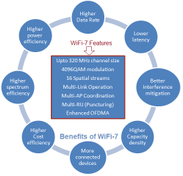
What is GCP? | Benefits of Google Cloud Platform
Explore Google Cloud Platform (GCP) services, features, and benefits. Learn how GCP offers compute, storage, AI, and more for scalable cloud solutions.
Showing 20 posts (Page 154 of 162)
Advertisement

Explore Google Cloud Platform (GCP) services, features, and benefits. Learn how GCP offers compute, storage, AI, and more for scalable cloud solutions.
Learn about LabVIEW, a graphical programming language used for test automation, data acquisition, and control applications. Discover its key features and building blocks.

Microsoft Azure is a cloud computing platform offering a wide range of services, including compute, storage, networking, and AI, used by businesses for building and managing applications.
Oracle Cloud is a comprehensive suite of cloud computing services offered by Oracle. Learn about its features, benefits, and key components.

Explore the top 10 advantages and disadvantages of using WhatsApp in 2024, from its ease of use and encryption to privacy concerns and data usage.

Understand the distinctions between whiskbroom and pushbroom sensors in remote sensing, including their design, advantages, and applications.

Explore the key differences between white noise and colored noise, their spectral characteristics, and how to generate them using MATLAB.
Explore Wi-Fi 7 channel allocations, frequencies, and bandwidths. Understand how Wi-Fi 7 optimizes spectrum use and enhances data rates with features like Multi-Link Operation.

Explore the pros and cons of Wi-Fi 7 (IEEE 802.11be), including its high speeds, reduced latency, increased complexity, and power consumption.

Learn about Wi-Fi Direct technology, which enables direct Wi-Fi connections between devices without an access point. Explore its benefits and applications.

Explore the functions and working principles of a Wi-SUN border router within a Field Area Network (FAN). Learn about its role in providing WAN connectivity, node authentication, and network management.

Explore the Wi-SUN FAN architecture, its features, and the advantages it offers for IoT applications, including smart cities and AMI metering.
Explore Wi-SUN frequency bands used globally, including USA, Canada, Australia, Japan, Europe, and India. Find key parameters and regulatory domains.
Explore Wi-SUN PHY modes, including symbol rates and modulation indices, as defined by IEEE 802.15.4g/u/v standards.

An overview of the Wi-SUN protocol stack layers, including the RF driver, PHY layer, and MAC layer, detailing their functions in Wi-SUN networks.

A comparison of Wi-SUN, LoRa, and NB-IoT technologies for IoT, covering their key differences in frequency, data rate, latency, and applications.

Explore the differences between Wi-SUN and WiFi technologies, including standards, data rates, coverage, and applications in smart homes and cities.

Wi-SUN is a secure, optimized mesh network promoted by the Wi-SUN Alliance for smart utility and smart city applications. It ensures interoperability between vendors using IEEE 802.15.4g.
Explore the key differences between WiBro and Mobile WiMAX technologies, including FFT sizes, MIMO support, HARQ schemes, duplexing methods, and network architectures.

Explore the distinctions between WiDi and WiFi, understanding their purposes, functionalities, and applications in wireless communication and display technology.
Advertisement